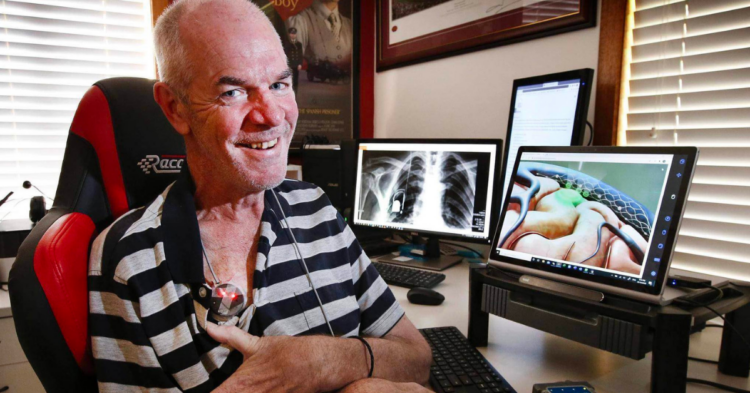Twitter can be a bit of a strange place to navigate for some people. However, for one man it was recently a place to make history thanks to the use of a groundbreaking piece of technology which enabled him to tweet by only using his thoughts.
The story has stunned people across the world as many hope it will open up many possibilities for advances in medical science .
62-year-old Philip O’Keefe recently became the first person to tweet using only their thoughts.

Philip suffers from amyotrophic lateral sclerosis (ALS), with his illness leaving him unable to move any of his upper limbs.
Philip was diagnosed with ALS back in 2015, but that has not stopped him from making history with the help of a Stentrode brain computer interface just before Christmas.
The Stentrode brain computer interface (BCI) allowed Philip to turn his thoughts directly into a tweet on December 23rd.
The interface enables people to control and/or carry out tasks on a computer screen using nothing but the individual’s mind.
Philip was able to use the interface to first write the tweet: “no need for keystrokes or voices. I created this tweet just by thinking it. #helloworldbci.”
Philip was apparently extremely excited at how much independence the new technology could potentially give him.
“When I first heard about this technology, I knew how much independence it could give back to me,” Philip told the Daily Mail .
“The system is astonishing, it’s like learning to ride a bike – it takes practice, but once you’re rolling, it becomes natural. Now, I just think about where on the computer I want to click, and I can email, bank, shop, and now message the world via Twitter,” he went on to say.
The BCI was created by a a neurovascular bioelectronics medicine company called Synchron.
In their own words, the Stentrode device is “designed to bypass damaged neural pathways in patients with severe paralysis, allowing them to control digital devices and restore functional independence.”
The Stentrode interface is placed upon the brain’s motor cortex which generates signals associated with movement. There is also a device attached to the user’s chest which then detects neural signals and then sends them to a decoder. Finally, a machine learning algorithm converts the detected signals into digital instructions, according to their website .
With Philip’s experience being a resounding success, the future looks bright for this technology.
The hope is that this technology will be able to help many people who struggle with illnesses which impair their ability to communicate with those around them.
Philips daughter also took to Twitter to help answer some questions about her father’s experience, even sharing that he had managed to play a bit of solitaire using only his mind as well!
h/t: Daily Mail

















































